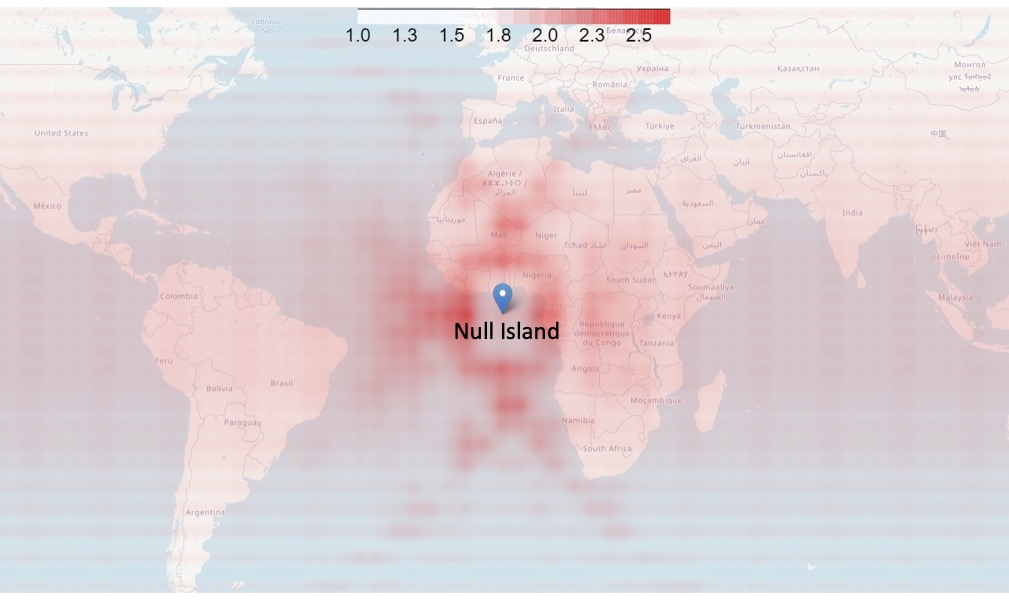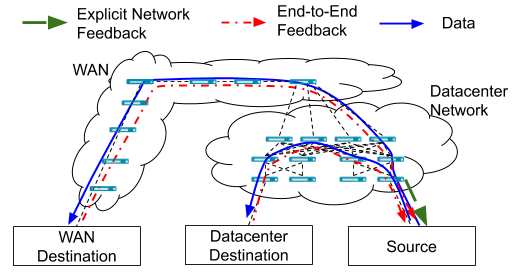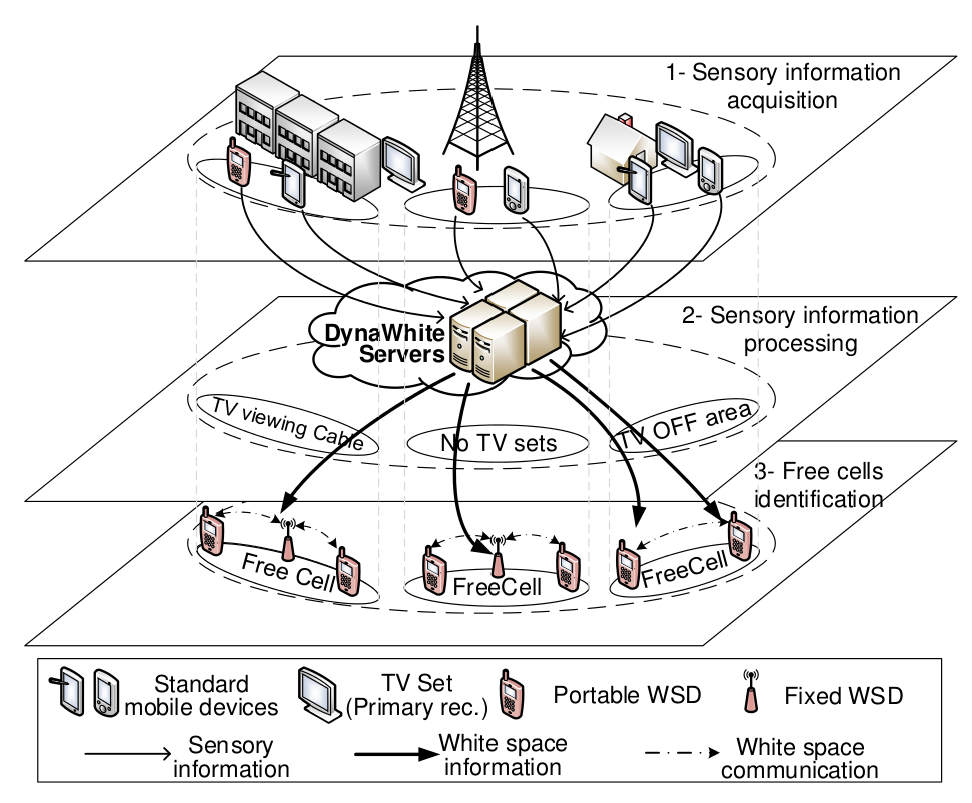Projects
My work spans several domains including networks, systems, and IoT. A common theme in my work is feasibility of cost-effective large scale deployments of the developed systems. This emerges from a deep sense of obligation of developing systems that can help both developed and developing.
- Scalable End Host Networking
[NSDI ’23] [PAM ’21] [OSDI ’20] [NSDI ’19] [CoNEXT ’19] [SIGCOMM ’17] - Formal Verification of Performance Properties of Resource Allocation Heuristics
[arXiv] [SIGCOMM ’21] - Understanding the Performance of LEO Satellite Networks
[PAM ’23] [LEO-NET ’23] - Wide Area Network (WAN) Congestion Control
[SIGCOMM ’20] [ICNP ’19] - Argus: Improved Target Surveillance Using Drones
[IPSN ’17] [CCCG ’15] [MASS ’14] [WiMob ’14] [MobiWac ’14] - DynaWhite: Dynamic White Space Detection and Utilization
[ICDCS ’17] [NetMag ’15] [WiNTECH ’14] [WCNC ’14] [ICC ’13] - NUZZER: Device Free WLAN Localization
[JSTSP ’14] [PerCom ’12] [TMC ’12] [WCNC ’12] [MobiCom ’11-Poster] - Misc
[ICNP ’18] [MCS ’15] [UBICOMM ’13] [PACT ’10-Poster] [MobiCom ’09-Poster]
Active Projects
Scalable End Host Networking

The goal of the project is develop end-host networking stacks that can scale, not only in terms of their messages per second capacity, but in terms of the number of network connections they can handle. To that end, we tackle problems in schedulers, the VM-hypervisor API, and the transport layer.
Current interest: 1) Improving the performance of low-latency web applications like Video Conferencing, Online Gaming, and AR/VR, and 2) Improving the performance of low-latency distributed datacenter applications, ensuring the network stack can efficiently manage spikes in demand from a diverse set applications.
Our research produced the following results:
- Compute Congestion Control: Datacenter applications are sensitive to tail latency and require high request throughput. Maintaining low tail latency and high throughput is especially diffcult under overload for RPCs with short service times. We developed an overload control scheme that can eliminate the side effects of overload in microsecond-scale services through a new, server-driven admission control scheme that issues credits based on server-side queueing delay. [NSDI ’23] [OSDI ’20]
Measurements to identify bottlenecks: We define two broad categories of problems; namely, admitting more packets into the network stack than can be handled efficiently, and increasing per-packet over- head within the stack. We show that these problems contribute to high CPU usage and network performance degradation in terms of aggregate throughput and RTT. [PAM ’21]
Scheduling: We started with improving the performance of shaping and rate limiting. We move from a multi-queue system (used in HTB and FQ Qdiscs in Linux) to a single queue time-based design with a single queue per network processing core to reduce the need for locking. This new design is shown to significantly outperform state-of-the-art deployments in large scale datacenter deployment. [SIGCOMM ’17]
Then, we approached the over arching problem of scheduling under programmable policies. We developed efficient priority queues to enforce packet ordering and extended the PIFO scheduler programming model to enable the implementation of a wider range of scheduling policies. Our new design was shown to outperform state-of-the-art in hierarchical packet scheduling and even outperform Carousel in event-based settings [NSDI ’19].
Stack design: We improved the back pressure techniques used in Carousel to lower the burden on the scheduler. In particular, we propose a way to reduce the number of packets processed by a scheduler by keeping track of active flows and scheduling the flows rather than scheduling the packets. This reducing latency as dispatched packets always meet short queues. It also reduces CPU by avoiding expensive retransmissions at the source. Finally, it improves throughput by reducing the CPU bottleneck. [CoNEXT ’19].
Formal Verification of Performance Properties of Resource Allocation Heuristics

This project attempts to provide concrete analytical tools to understand the performance of heuristics used in resource allocation and management of distributed system. The project leverages progress made in formal verification tools (e.g., Z3) that can efficiently search through all potential scenarios that can encounter a heuristic. We use such tools to identify scenarios where systems underperform, helping system designers avoid them or plan for them. Our first step is to apply apply this approach to Wide Area Network Congestion Control [SIGCOMM ’21].
Current interest: Building such performance models for other network management algorithms. Examples can be found in this technical report [arXiv].
Understanding the Performance of LEO Satellite Networks

The aim of my work is to develop robust and intuitive models that can accurately describe and predict variability in satellite networks, and leverage these models to improve network protocols used for satellite networking. [PAM ’23] [LEO-NET ’23]
Current interest: build on our insights and expertise, providing a more formal and detailed characterization of LEO satellite networks, leveraging that understanding to improve the network's performance..
Wide Area Network (WAN) Congestion Control

This project revisits the classic end-to-end principle, where complex network functions are performed by the end points, simplifying the implementation of network elements. The project identifies scenarios where this end-to-end principle fails in handling congestion scenarios and proposes solutions that improve the reliability of the network with minimal deployment overhead.
Current interest: Improving congestion control performance on heterogenous paths and developing robust models of multi-control loop congestion control algorithms.
Handling WAN bottlenecks in the Datacenter Network: When WAN and datacenter traffic compete for bandwidth, both types of traffic suffer from performance degradation. My research on this topic thoroughly characterizes issues arising from the competition between WAN and datacenter traffic and proposes Annulus, a congestion control scheme that handles this type of congestion. My study of this problem is based on measurements conducted on Google’s infrastructure and simulations used to validate our conclusions. I implemented Annulus on a testbed at Google and in simulation. Annulus increases bottleneck utilization by 10% and lowers datacenter flow completion time by 1.3-3.5×. [SIGCOMM ’20]
Inter-Autonomous System Congestion Control: The Internet is now flat. Content providers like Google and Amazon are directly connected to Internet Service Providers (ISPs) through peering links. This peering happens through multiple physical connections. Our analysis of congestion measurements between content providers and ISPs shows that when a peering link is congested, there are usually multiple other links with excess capacity. Selecting the best alternative route requires knowing bandwidth demand of traffic flowing between the two networks, which is calculated based on the demand of clients and known only to content providers. It also requires knowing the best route to deliver the data to the clients, which is known only to the ISP. Unison allows content providers and ISPs to work together to select the best alternative route, as neither of them individually has enough information to select the best alternative route. Unison leads to better user quality of experience and higher utilization of the ISP network. [ICNP ’19]
Old Projects
Argus: Improved Target Surveillance Using Drones
Recently, Micro Air Vehicles (MAVs) (a.k.a. microdrones or small/micro UAVs), that are equipped with sensors, were proposed as new form of mobile wireless sensor networks. One of the main advantages if using MAVs as mobile sensor networks is their maneuverability and small size which enable them to be placed in locations that achieve optimal sensing coverage in both indoor and outdoor scenarios. We propose the usage of MAVs for enhancing smart surveillance, "the usage of automatic video analysis technologies in video surveillance". One of the challenges of smart surveillance is the placement of cameras to increase the probability of recognizing activities within the area of interest. Our goal is to improve smart surveillance using MAVs, as more agile and mobile cameras, by addressing issues pertaining MAVs placement, communication optimization and resources management.
[IPSN’17] [CCCG’15] [MASS’14] [WiMob’14] [MobiWac’14]
DynaWhite: Dynamic White Space Detection and Utilization

Our work in improving white space networks tackles two main topics: 1) Detection by improving white space databases and white space detection both in terms of accuracy and cost by exploring new sensors and new detection approaches, and 2) Utilization by improving routing protocols developed for cognitive radio networks whose direct application is white space networks.
Detection: Current approaches available for detecting white space (i.e. spectrum databases and spectrum sensing) waste a lot of white space opportunities due to problems inherent in their conceptual views of white spaces. For instance, spectrum databases rely on propagation models that are has overestimates due to their assumptions about the environment model and spectrum sensing uses low thresholds to avoid hidden node cases. Also, both approaches focus on TV transmitters and ignore the true spectrum incumbent, that is the TV receivers.
In this project, we demonstrate the potential benefits of addressing these drawbacks and provide sample approaches to do so. On one hand, we use ubiquitous sensors to detect TV sets instead of detecting TV towers, which forms the basis of the DynaWhite database. On the other hand, we show the fusing spectrum sensing and geolocation databases can over come the drawbacks of both of them. [ICDCS ’17] [NetMag’15] [WiNTECH’14]
Utilization: We also look at how routing of data can be performed in such networks. We develop a routing protocol that takes both location and interference with spectrum incumbents into account. We develop a framework that facilitates the development of cost-efficient large-scale CRNs routing protocols testbeds to tests the family of protocols that are developed for spectrum aware networks. The testing framework allows the designers to focus on the CRNs routing protocols by abstracting the PHY and MAC layers while providing the necessary cross layer functionalities. [WCNC’14] [ICC’13]
NUZZER: Device Free WLAN Localization

Device free Passive (DfP) Localization is a new technology that enables ordinary WiFi networks to be used to track human motion within indoor environments without the need for the tracked human to carry a device. DfP localization systems depend on the fact that the presence of a human with a wireless environment affects the signal characteristics. The purpose of such of this project is to develop highly accurate intrusion detection systems and motion tracking systems. These systems can provide offices, malls, and even homes with security systems with a simple software update and system calibration using the already installed WiFi networks. Other applications include smart homes, elderly or disabled assistance and boarder protection systems.
[JSTSP’14] [PerCom’12] [TMC’12] [WCNC’12] [MobiCom’11-Poster]
Misc
Resource Sharing for Edge Computing
We envision a new approach where all devices within the same network are 1) logically mesh connected either directly through Bluetooth or indirectly through WiFi, and 2) cooperate in a symbiotic fashion to perform different tasks. The SymbIoT architecture allows devices to assume different roles based on their capabilities (e.g., processing, storage, and UI) [MCS ’15]. We also address the issue of high latency in commodity WiFi devices, aiming at providing a low latency stack for computation and communication. We introduce the Soft Token Passing Protocol (STPP) that coordinates medium access between competing WiFi devices showing that it can significantly improve latency of AR/VR applications [ICNP ’18].
TV Audience Measurements
TV audience measurement is an important aspect of the TV industry (e.g. advertisement and TV shows production). Traditionally, the detection techniques of TV viewers’ habits are concerned more about the collective preferences of the viewers and rely mainly on focus groups or special hardware connected to the TV (e.g. set top devices). In this project we take advantage of the rise of two-screen viewing and connected viewers (i.e. using tablets or mobile phones while watching TV) to use mobile devices to track the device's owner's TV viewing habits. This allows for the fine grain tracking of TV viewers habits in the same sense that their online behavior is tracked by web browsers which allows for a more informed business model decision based on this new information which can also tie the online/mobile advertisement business to TV advertising. [UBICOMM’13]
DNIS: Dynamic Network Interface Scheduling
Current operating systems use only one of the available network interfaces to connect to the internet. DNIS aims at aggregating the bandwidth of the multiple network interfaces (WiFi, 3G, Ethernet, etc) available on mobile devices to achieve the highest throughput possible. This was done without the need to change legacy servers by dynamically assigning TCP connections to different interfaces. Also learning algorithms were applied to select map TCP connections to the interfaces based on the characteristics of both the interfaces and the applications creating the connections. [MobiCom’09-Poster]